
Vespasian
Back to Spanish Steps Continue to Forum
Any
tourist in
The
Colosseum was originally known as the Flavian Amphitheater, reflecting the
family name of Vespasian and Titus. The
name “Colosseum” seems to have been related to a gigantic statue of himself
which Nero had built nearby (undoubtedly likened by some to the
A
few structural facts:
Additional concerns for the structure come from the constant vibrations originating from the Colosseo Metro stop, just across the street. Oblivious to these concerns at the time, we arrived at this stop following a short trip from the Spagna stop.
 Colosseo Metro Station | 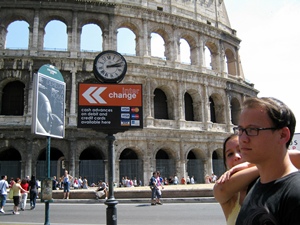 Connie and Philip and Colosseum |
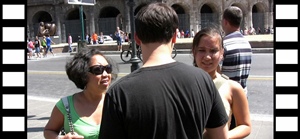
Across from the Colosseum
HD Video (21.9 MB) SD Video (10.9 MB)
We had to cross a street to get to the
Colosseum, but once across we were safe from vehicular traffic, as most of the
area immediately surrounding the Colosseum has been pedestrianized. This area is also safe for sellers of
overpriced souvenirs and refreshments, and (apparently) for pickpockets, so one
must remain alert. In addition, one has
the opportunity to pose for photographs with genuine Roman centurions, who
somehow know how to operate digital cameras.
They also accept modern currency.
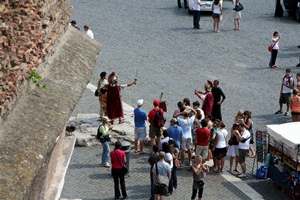
Helpful Centurions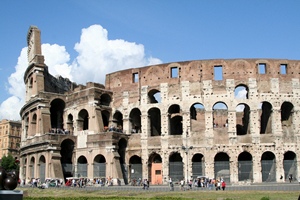
The Colosseum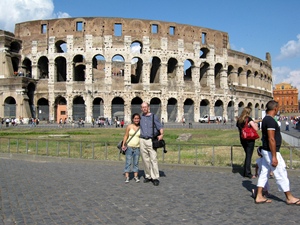
Connie and Bob and Colosseum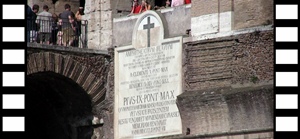
The Colosseum
HD Video (11.6 MB) SD Video (5.9 MB)
At
the time of our visit, admission to the Colosseum was sold as part of a
combination ticket which also included admission to the Forum to the west (more
on this later) and the Palatine Hill above it.
It is also possible to buy this same ticket at the entrance to the
Forum, just up Via di San Gregorio, and the Forum line is much shorter. Or, if you own a Roma Pass and are using one
of your free admissions for this purpose (highly advised for maximum cost-effectiveness),
you can bypass the ticket line entirely, as there is a special Colosseum
entrance just for Roma Pass holders.
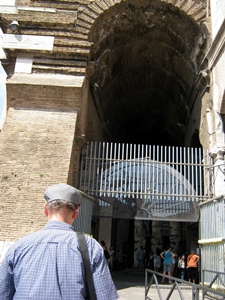
Bob Near Entrance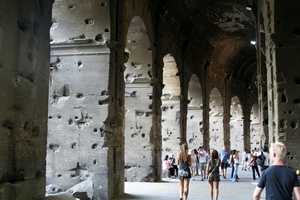
Inside Entry Passage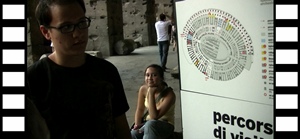
In the Entry Passage
HD Video (20.3 MB) SD Video (10.8 MB)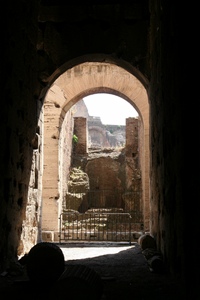
View Into Arena
As
one would expect, the Colosseum is a very crowded place on a summer
afternoon. There are places where the
throng is more compacted than at others, but solitude is never an option. We did see a bride and groom who were somehow
posing for pictures, though.
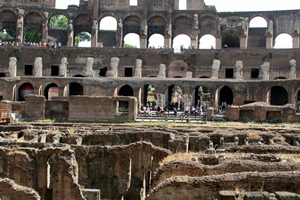 Inside the Colosseum | 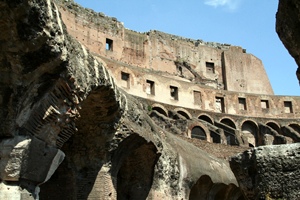 Inside Wall to East |
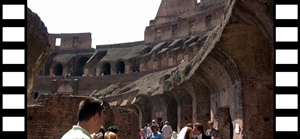 Inside Colosseum with Bride and Groom HD Video (22.5 MB) SD Video (11.3 MB) | 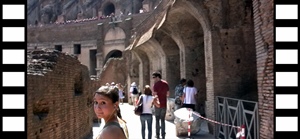 Walking Around with Connie HD Video (15.1 MB) SD Video (7.6 MB) |
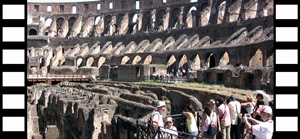 Connie, Hypogeum and Interior HD Video (19.9 MB) SD Video (12.0 MB) |  Hypogeum |
 South Interior | 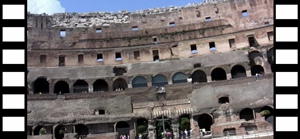 View from South Interior HD Video (15.3 MB) SD Video (10.0 MB) |
Tourists can pretty much go where they please, with portions of three levels open. The hypogeum was not open to tourists during our visit, but apparently this has changed – check the Colosseum website for details.
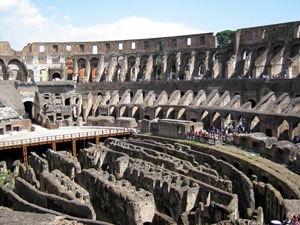 View from Upstairs | 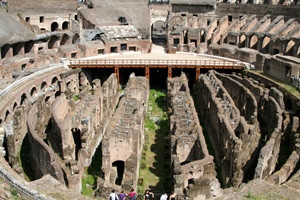 Hypogeum from Above |
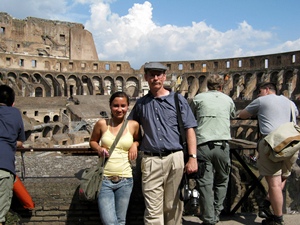 Connie and Bob | 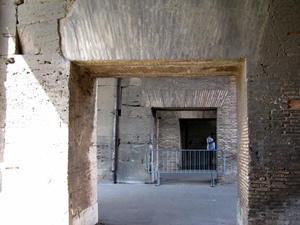 Square Archways |
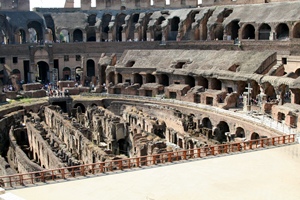 View from East Endzone |  Nella Photographing Philip and Connie HD Video (31.3 MB) SD Video (20.7 MB) |
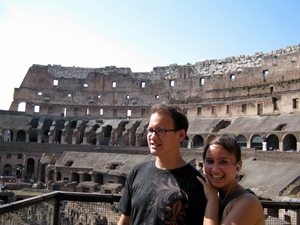 Philip and Connie | 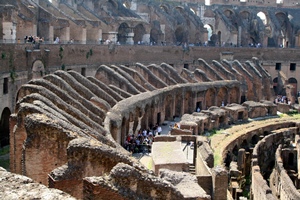 Southside Seating |
At the time of our visit, there
was an exhibit about Vespasian (under whom construction of the Colosseum was
begun) with statues and busts and assorted ruin fragments on display. There is a small bookshop on the south side
of the arena.
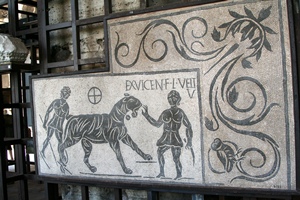
Mosaic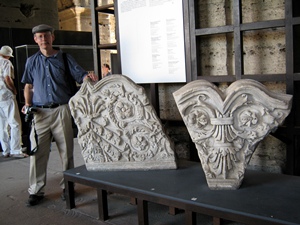
Bob and Fragmentary Decoration
At
the west end of the arena, there is a point where one can look outward from the
Colosseum, to the west. There is a nice
view of the Arch of Constantine, which is enclosed in the pedestrianized area
around the Colosseum. This arch is 69
feet tall, and was built in 315 A.D. to commemorate the victory of Constantine
I over Maxentius at the Battle of Milvian Bridge in 312.
 Arch of Constantine | 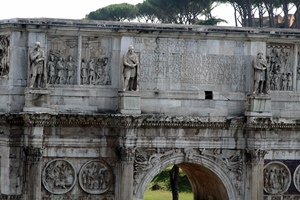 Arch Detail |

Arch of Constantine
HD Video (21.6 MB) SD Video (7.0 MB)
On exiting the Colosseum, we headed over to the Arch for a closer look.
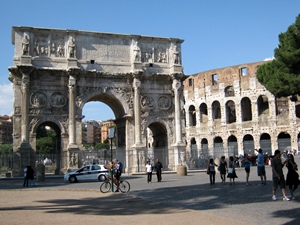 Arch of Constantine - South Side | 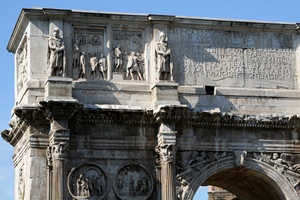 Arch of Constantine - South Detail |
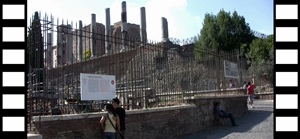
Arch of Constantine, Forum and Vendor
HD Video (19.4 MB) SD Video (12.4 MB)
After having our fill of the Arch, we continued up Via di San Gregorio to the entrance for the Forum, our next destination.